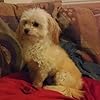To answer questions about
The Fifth Elephant,
please sign up.
Pixellle
Because there are so many books in the Discworld series, it can be daunting for a new reader. However, a reading order is necessary, as characters grow and change considerably through the series. But the Discworld series is actually made up of 4 or 5 smaller series, which follow a set of characters.
The best, and most common, approach is to to read each *sub-series* in order. Since each sub-series consists of a very manageable number of books, it's an easy way to tackle Discworld.
Here's a chart showing the order of the different series within Discworld:
https://io9.gizmodo.com/how-to-read-t...
By the way, if you google this question, you will get many responses, and some very good charts.
The best, and most common, approach is to to read each *sub-series* in order. Since each sub-series consists of a very manageable number of books, it's an easy way to tackle Discworld.
Here's a chart showing the order of the different series within Discworld:
https://io9.gizmodo.com/how-to-read-t...
By the way, if you google this question, you will get many responses, and some very good charts.
Nicola
They don't need to be read in strict order but it helps if you have some idea of the structure of the world and who the people are for the later books otherwise I've heard it can be quite confusing.
Terry Pratchett has several sub-series' inside the over arching series of 'Discworld' and they are: 1. Rincewind the cowardly and inept wizard (he starts off the series with books #1 and #2); 2. The Witches (start with Wyrd sisters for this one; 3; The Guards (start with Guards! Guards!) and 4. Death (start with Mort) and possibly 5. The Wizards although these often concern other characters as well. He also has the Tiffany Aching series which is aimed more at junior readers but I personally love them.
Quite a few of his books overlap characters so there are very few entirely stand alone books even if they aren't from one of the 4 main groups. Probably the best stand alone would be Small Gods.
Terry Pratchett has several sub-series' inside the over arching series of 'Discworld' and they are: 1. Rincewind the cowardly and inept wizard (he starts off the series with books #1 and #2); 2. The Witches (start with Wyrd sisters for this one; 3; The Guards (start with Guards! Guards!) and 4. Death (start with Mort) and possibly 5. The Wizards although these often concern other characters as well. He also has the Tiffany Aching series which is aimed more at junior readers but I personally love them.
Quite a few of his books overlap characters so there are very few entirely stand alone books even if they aren't from one of the 4 main groups. Probably the best stand alone would be Small Gods.
Shane
Short answer: Yes, the books should be read in order of publication.
Long answer: To paraphrase Dr. Corey Olsen, "the Tolkien Professor", 'all subsequent works in a series are created with the knowledge of the previous works and will be influenced by that knowledge.' There are story arcs and character developments in the world that build and interact as the books progress and if you read popcorn or by the sub-arcs in the story, they will make less sense than if you read them in the order they are written.
Long answer: To paraphrase Dr. Corey Olsen, "the Tolkien Professor", 'all subsequent works in a series are created with the knowledge of the previous works and will be influenced by that knowledge.' There are story arcs and character developments in the world that build and interact as the books progress and if you read popcorn or by the sub-arcs in the story, they will make less sense than if you read them in the order they are written.
Lisa
I think each book stands alone, however there is a story arc that builds when you read them in order. It makes it more interesting for me.
About Goodreads Q&A
Ask and answer questions about books!
You can pose questions to the Goodreads community with Reader Q&A, or ask your favorite author a question with Ask the Author.
See Featured Authors Answering Questions
Learn more






